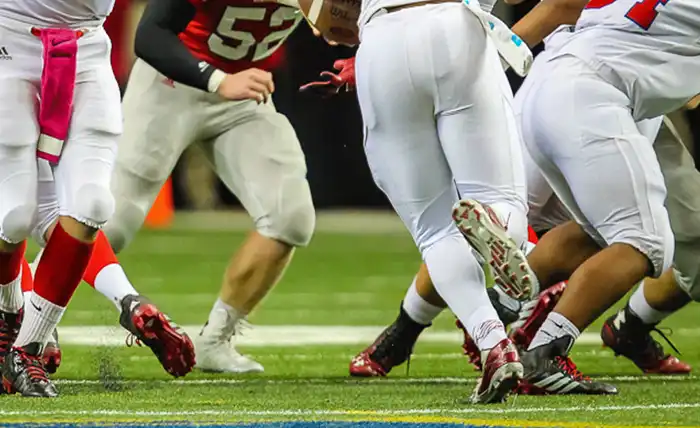How to Choose the Right Turf Cleats for Your Sport

Turf cleats are shoes that have small rubber or plastic studs on the bottom to provide traction on artificial turf fields. Turf cleats are different from regular cleats, which have longer metal or plastic spikes that dig into natural grass or dirt. Turf cleats are designed to prevent injuries and improve performance on synthetic surfaces, but they may not be suitable for every sport. In this blog post, we will discuss how to choose the right turf cleats for your sport, and what factors to consider when buying them.
Why Do You Need Turf Cleats?
Artificial turf is becoming more popular in sports venues, especially for soccer, football, baseball, and lacrosse. Artificial turf has many advantages over natural grass, such as durability, low maintenance, and consistent playing conditions. However, artificial turf also has some drawbacks, such as increased friction, heat, and abrasion. These factors can affect your feet and ankles, and cause injuries such as blisters, sprains, and turf burns.
To prevent these problems, you need to wear shoes that are specially designed for artificial turf. Turf cleats are one of the options that you can choose from. Turf cleats have short studs that are evenly distributed on the sole of the shoe. These studs create a balance between grip and glide on the synthetic surface, allowing you to make quick turns and stops without slipping or getting stuck. Turf cleats also have a cushioned midsole and a flexible upper that provide comfort and support for your feet.
What Factors to Consider When Buying Turf Cleats?
There are many factors that you need to consider when buying turf cleats, such as:
- The sport that you play: Different sports have different requirements for footwear. For example, soccer players need turf cleats that are lightweight and have a snug fit, while football players need turf cleats that are sturdy and have ankle support. You should look for turf cleats that are designed for your specific sport, or at least compatible with it.
- The type of artificial turf: There are different types of artificial turf, such as short-pile, long-pile, and hybrid. Short-pile turf is more similar to natural grass, while long-pile turf is more cushioned and bouncy. Hybrid turf is a combination of both. You should choose turf cleats that match the type of artificial turf that you play on, or that can adapt to different types.
- The size and fit: Turf cleats should fit your feet well, without being too tight or too loose. You should measure your feet before buying turf cleats, and try them on with socks that you normally wear. You should also check the width and arch support of the shoe, and make sure that they are comfortable for your feet.
- The quality and durability: Turf cleats should be made of high-quality materials that can withstand the wear and tear of artificial turf. You should look for turf cleats that have a strong sole, a breathable upper, and a reinforced toe cap. You should also check the stitching and the glue of the shoe, and make sure that they are not loose or peeling off.
- The price and style: Turf cleats come in various prices and styles, depending on the brand, model, and features. You should set a budget for yourself before buying turf cleats, and compare different options within your range. You should also choose a style that suits your taste and personality, as well as your team’s colors and uniforms.
How to Care for Your Turf Cleats?
Turf cleats need proper care to maintain their performance and appearance. Here are some tips on how to care for your turf cleats:
- Clean them after every use: You should wipe off any dirt or mud from your turf cleats with a damp cloth or a soft brush after every use. You should also remove any debris from the studs with a toothpick or a needle.
- Dry them properly: You should never leave your turf cleats wet or damp, as this can cause mold or bacteria growth. You should air dry your turf cleats in a cool and ventilated place, away from direct sunlight or heat sources. You should also stuff them with newspaper or paper towels to absorb any moisture and keep their shape.
- Store them safely: You should store your turf cleats in a clean and dry place, preferably in a shoe bag or a box. You should avoid putting them in plastic bags or containers, as this can trap moisture and cause odor or damage.
- Replace them when needed: You should replace your turf cleats when they show signs of wear and tear, such as cracks, holes, or loose studs. Worn-out turf cleats can affect your performance and increase your risk of injury.
Conclusion
Turf cleats are shoes that have short studs on the bottom to provide traction on artificial turf fields. They are different from regular cleats, which have longer spikes that dig into natural grass or dirt. Turf cleats are designed to prevent injuries and improve performance on synthetic surfaces, but they may not be suitable for every sport. You should choose turf cleats that are designed for your specific sport, match the type of artificial turf that you play on, fit your feet well, and are made of high-quality materials. You should also care for your turf cleats properly, and replace them when needed. Turf cleats can help you enjoy your sport on artificial turf, and give you an edge over your opponents.
Read more about: kappacourse.pro




